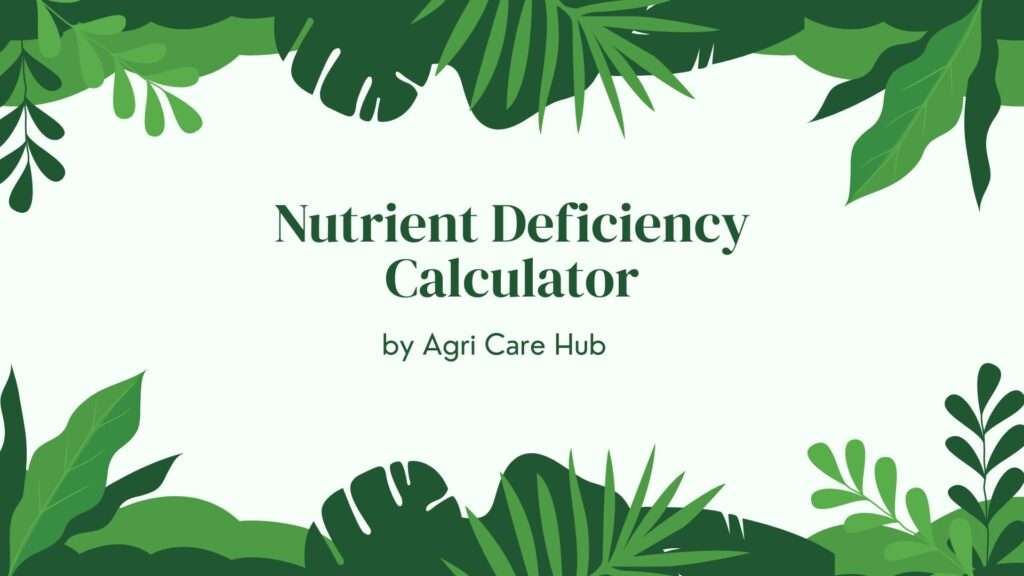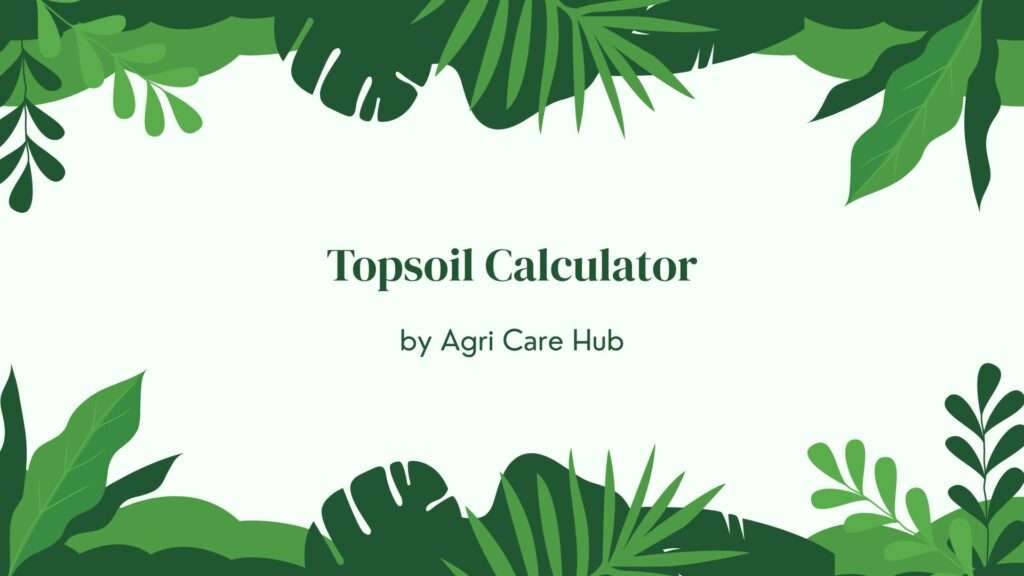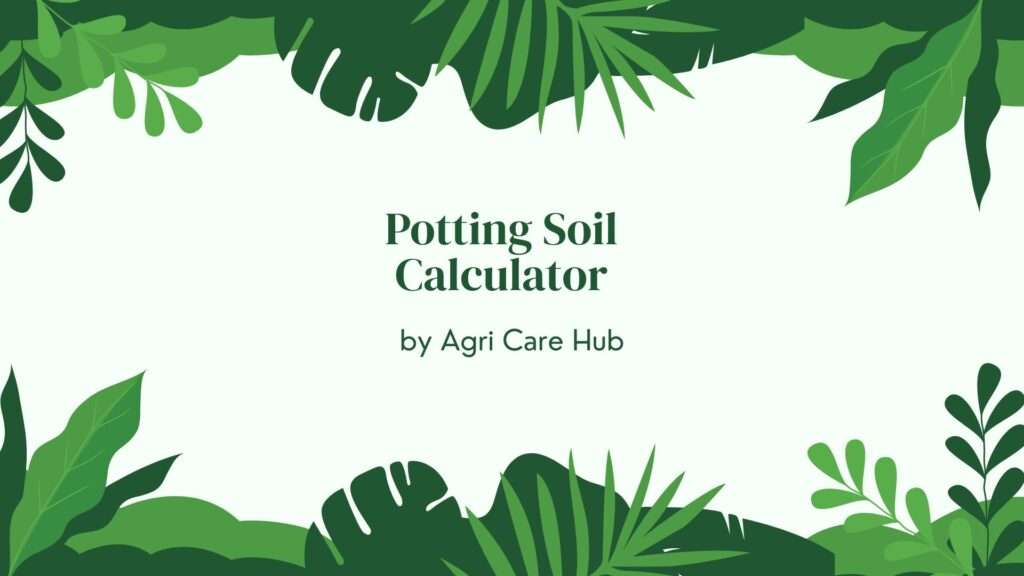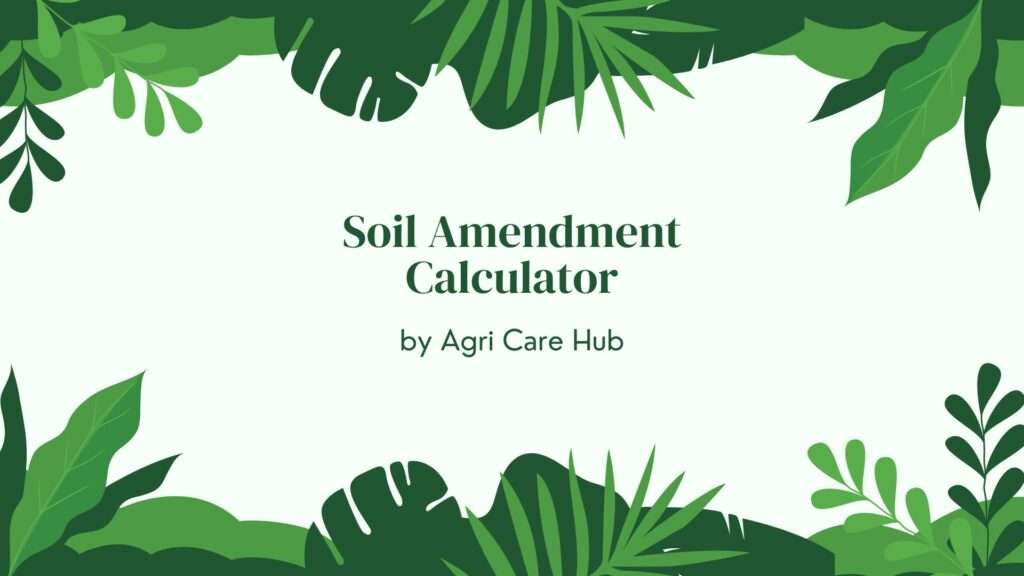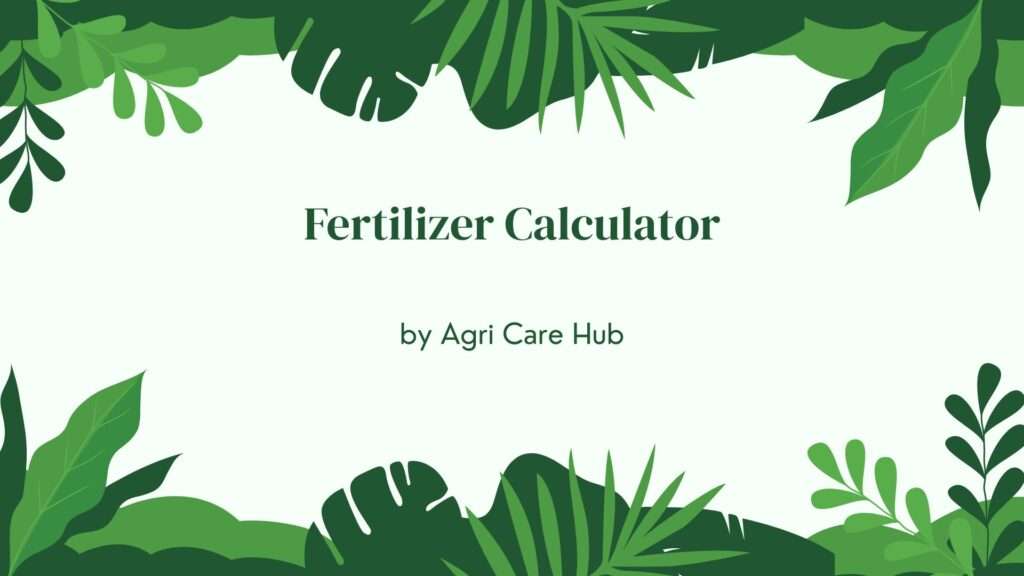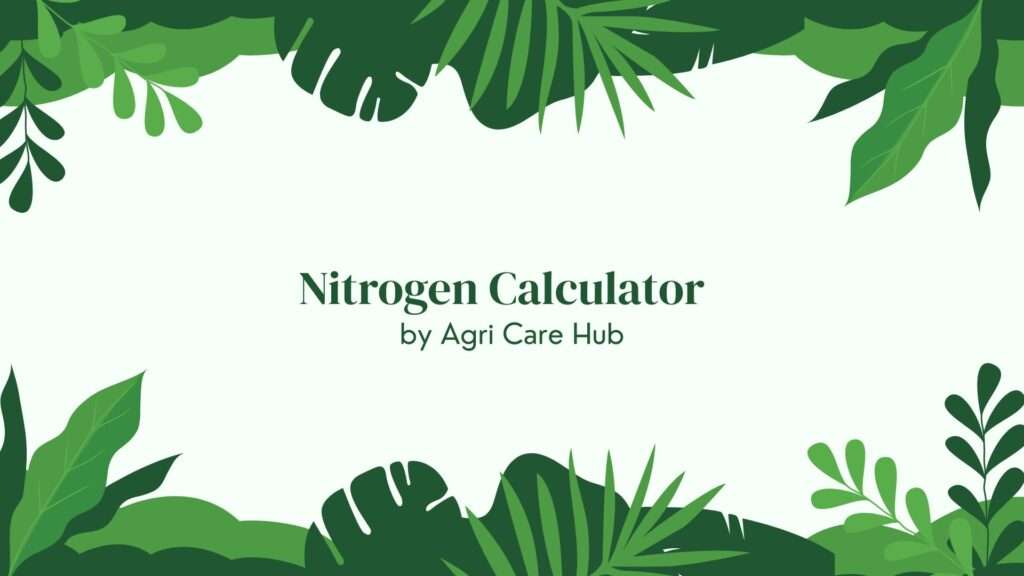Nutrient Deficiency Calculator
About the Nutrient Deficiency Calculator
The Nutrient Deficiency Calculator is a scientifically designed tool to help farmers and agricultural enthusiasts identify and address nutrient deficiencies in crops. By inputting soil test results for nitrogen, phosphorus, and potassium, along with observed plant symptoms, this tool provides accurate diagnoses and recommendations based on verified agricultural science. Nutrient deficiencies can significantly impact crop health and yield, making this calculator essential for sustainable farming. Developed with insights from Agri Care Hub, it promotes precision agriculture. Learn more about Nutrient Deficiency.
Importance of the Nutrient Deficiency Calculator
Nutrient deficiencies, particularly of nitrogen, phosphorus, and potassium, are among the most common factors limiting crop productivity. These macronutrients are critical for plant growth, affecting processes like photosynthesis, root development, and stress resistance. Deficiencies can manifest as visible symptoms, such as yellowing leaves or stunted growth, but identifying the specific nutrient requires precise analysis. The Nutrient Deficiency Calculator uses soil test data and symptom observations to diagnose issues accurately, helping farmers apply targeted fertilizers to correct deficiencies, improve yields, and reduce environmental impact.
This tool is vital for precision agriculture, as it eliminates guesswork, optimizes fertilizer use, and minimizes over-application, which can lead to nutrient runoff and environmental degradation. By aligning with scientific methodologies from sources like the International Plant Nutrition Institute, the calculator ensures reliable recommendations, supporting sustainable farming practices and cost-effective nutrient management.
User Guidelines
To use the Nutrient Deficiency Calculator effectively, follow these steps:
- Conduct Soil Tests: Obtain soil test results for nitrogen, phosphorus, and potassium levels (in ppm) from a certified lab or agricultural extension service.
- Select Crop Type: Choose the crop you are growing from the dropdown menu, as nutrient requirements vary by crop.
- Enter Soil Test Data: Input the soil test values for nitrogen, phosphorus, and potassium.
- Identify Symptoms: Select the observed plant symptoms from the dropdown menu to aid in diagnosis.
- Calculate: Click the "Diagnose Nutrient Deficiency" button to receive a diagnosis and fertilizer recommendations.
- Apply Recommendations: Use the results to guide fertilizer applications, selecting appropriate nutrient sources (e.g., urea for nitrogen, triple superphosphate for phosphorus, potassium chloride for potassium).
Consult a local agronomist to validate recommendations, as soil conditions and regional factors may influence results.
When and Why You Should Use the Nutrient Deficiency Calculator
The Nutrient Deficiency Calculator is ideal during the growing season when plants show signs of stress or before planting to assess soil health. Use it when:
- You notice symptoms like yellowing leaves, purplish foliage, or stunted growth.
- You have recent soil test results and want to optimize nutrient applications.
- You aim to enhance crop yield while minimizing environmental impact.
- You are adopting precision agriculture for data-driven nutrient management.
This tool ensures nutrient applications align with scientific principles, reducing the risk of deficiencies that lower yields or excesses that harm the environment. It supports sustainable farming by minimizing nutrient runoff, which can cause issues like eutrophication, and helps comply with agricultural regulations.
Purpose of the Nutrient Deficiency Calculator
The primary purpose of the Nutrient Deficiency Calculator is to provide farmers, agronomists, and agricultural professionals with a reliable, science-based tool to diagnose and correct nutrient deficiencies in crops. By combining soil test data with symptom analysis, it delivers precise recommendations that enhance crop health, improve soil fertility, and promote sustainable agricultural practices. The tool simplifies complex nutrient management, making it accessible to users of all expertise levels.
It also serves as an educational resource, raising awareness about the importance of balanced nutrition in agriculture and the consequences of nutrient deficiencies. By offering actionable insights, it empowers users to make informed decisions that benefit their crops and the environment.
Scientific Basis of the Nutrient Deficiency Calculator
The Nutrient Deficiency Calculator is grounded in established soil science and agronomic principles, using methodologies from peer-reviewed research, such as nutrient deficiency guides from the International Plant Nutrition Institute. It evaluates:
- Soil Test Levels: Nitrogen (10–50 ppm), phosphorus (15–30 ppm), and potassium (100–150 ppm) thresholds determine nutrient availability.
- Symptom Analysis: Symptoms like yellowing leaves (nitrogen), purplish leaves (phosphorus), or leaf scorching (potassium) guide diagnosis.
- Crop-Specific Needs: Different crops have unique nutrient requirements, influencing deficiency thresholds.
The calculator compares soil test values against critical thresholds and correlates them with symptoms to diagnose deficiencies. Recommendations are based on standard fertilizer application rates (e.g., 20–30 kg/ha per ton of yield for each nutrient), adjusted for soil availability using conversion factors (e.g., 0.5 for nitrogen, 0.3 for phosphorus, 0.5 for potassium).
Benefits of Using the Nutrient Deficiency Calculator
Using the Nutrient Deficiency Calculator offers numerous benefits, including:
- Accuracy: Precise diagnosis based on soil tests and symptoms.
- Cost Savings: Optimize fertilizer use, reducing unnecessary expenses.
- Environmental Protection: Minimize nutrient runoff, preserving water and soil quality.
- Improved Yields: Address deficiencies to enhance crop growth and productivity.
- Sustainability: Support long-term soil health and eco-friendly practices.
By integrating this tool, farmers contribute to sustainable agriculture while achieving better economic outcomes.
How to Interpret Results
The calculator provides a diagnosis identifying potential nutrient deficiencies (nitrogen, phosphorus, or potassium) and recommends fertilizer application rates in kg/ha (as N, P₂O₅, or K₂O). For example, a recommendation of 50 kg/ha of nitrogen suggests applying a fertilizer like urea (46% N) at approximately 109 kg/ha (50 ÷ 0.46). If no deficiency is detected, the result will indicate sufficient nutrient levels. Always verify fertilizer nutrient content and consult an agronomist to adjust for soil type and regional conditions.
Additional Resources
For more information on nutrient management, visit Agri Care Hub for expert advice and resources. To understand common nutrient deficiencies, explore Nutrient Deficiency on Healthline. Local agricultural extension services and soil testing labs can provide region-specific guidance to complement the calculator’s recommendations.
Understanding Nutrient Deficiencies in Agriculture
Nutrient deficiencies occur when plants lack essential nutrients, leading to impaired growth and reduced yields. Nitrogen deficiency often causes yellowing leaves and stunted growth, phosphorus deficiency results in purplish foliage and poor root development, and potassium deficiency leads to leaf scorching and weak stems. The Nutrient Deficiency Calculator uses soil test data and symptom observations to pinpoint the deficient nutrient, ensuring targeted corrections. Soil nutrient availability depends on factors like pH, organic matter, and cation exchange capacity, which the calculator accounts for through standardized conversion factors.
Addressing deficiencies promptly is crucial to prevent yield losses and maintain soil health. This tool simplifies the process, making it accessible to farmers of all experience levels.
Practical Applications of the Nutrient Deficiency Calculator
The Nutrient Deficiency Calculator is versatile, suitable for small-scale farms, commercial operations, and research purposes. It is particularly valuable for:
- Crop Monitoring: Diagnose deficiencies during the growing season to take corrective action.
- Soil Health Assessment: Use soil test data to monitor nutrient levels and plan fertilization.
- Cost Management: Optimize fertilizer budgets by addressing only deficient nutrients.
- Environmental Stewardship: Reduce nutrient runoff to protect ecosystems.
By incorporating this tool, farmers can enhance crop management and contribute to sustainable agriculture.

